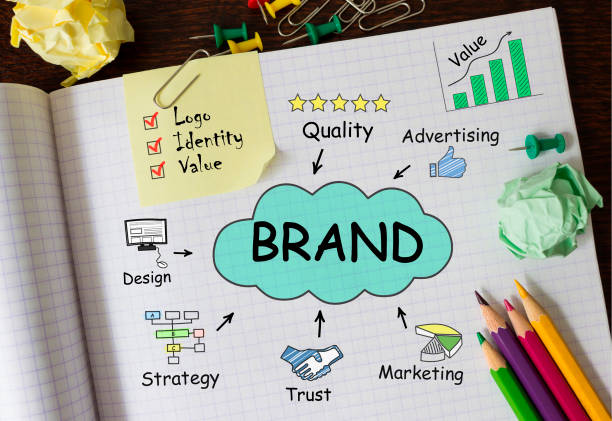
Visual identity is the visible representation of a brand, from the logo and colors to the website and design of physical stores. The visual identity sounds similar to the brand identity, but its unique benefits and elements set it apart. A quality visual identity should be seen as a priority in any business strategy. Creating a visual identity will allow your brand to express its personality and character, but also to create a connection with your target customers. Of course, visual identity is not effective on its own. It must be supported and promoted through a solid and carefully crafted marketing strategy.
The goal of visual identity is to define graphic and visual standards that enable consistent communication of the brand on all channels, from printed materials to websites and social media.
Visual identity is created by graphic designers and has the following main elements:
- Logo: The logo is extremely important and represents the visual synthesis of the identity of a brand. This element crystallizes the mission, values and target audience of a brand. Therefore, in the process of creation, the message that the brand wants to convey must be taken into account. The logo makes a business easy to recognize, to identify and to remember.
- Color palette: Color influences the mood, attitude and emotions of the client. According to studies, for 90% of consumers, the color of the brand plays a key role in the decision to buy. Color enhances the brand’s ability to be recognized by up to 80%. The consistency of the color palette makes the brand easily recognizable.
- Typography: The font, the font size, the stylistic elements and the degree of visibility are also means of communication with the viewer. They may hide symbols and meanings that are characteristic of that brand. The chosen font and the way the text is arranged influences the visual identity and the way your brand is perceived.
- Images: Pictures and videos used on your website, on social media networks or in direct communication with customers, to illustrate messages, are also essential for the way the public perceives your brand. It should be noted that the public resonates with the figures he sees and tends to reflect in the products and brands he consumes. Images need to match the rest of the visual identity in style, color, and message to create a coherent viewer experience and avoid confusion.
- Graphics: Anything that is drawn or illustrated in connection with your brand relates to graphics. From the shape of the product to the symbols used to create the logo, these graphic signs communicate to the audience more effectively than a series of words.
- Physical assets: The items listed above must be adapted according to the assets with which the public comes into contact: diaries, brochures, envelopes, business cards or other promotional items. Depending on the size and nature of the company, the visual identity can be reflected in details such as the appearance of the store or the clothing of the staff.
About the importance of visual identity
The visual identity in marketing must be unique, following the same direction regardless of the form in which it is presented. This will create a trustworthy, professional image of your brand. Visual identity is, in fact, the first element with which the public interacts. The more impactful, clearer, more concise and powerful it is, the easier it will be for the public to create positive associations. It is important that the logo, fonts and colors are chosen correctly, being relevant and consistent with the mission of your business.
If the visual identity of the business is unitary and follows a precise direction, it conveys more professionalism and trust to the public. Visual identity is only a small part of what branding means, that’s why large companies invest constantly and significantly in brand development.
A well-made visual identity triggers an immediate affinity of customers, and on the other hand, visual inconsistency conveys uncertainty and makes customers unsure of the products/ services you sell.
Creating a visual identity for a brand has multiple benefits: visibility, recognition, differentiation, credibility continuity. It is an essential part of the branding strategy and is one of the aspects of the business that comes into direct contact with the customer.
Both branding and visual identity need to be done by professionals in order to be effective in communicating with the target audience. Both terms mean different things and are run by different people. A graphic designer must know how to do all aspects of visual identity, but his job stops there. A marketing expert has a broader perspective on all aspects of the brand and the ways in which each element can positively reflect brand identity.
